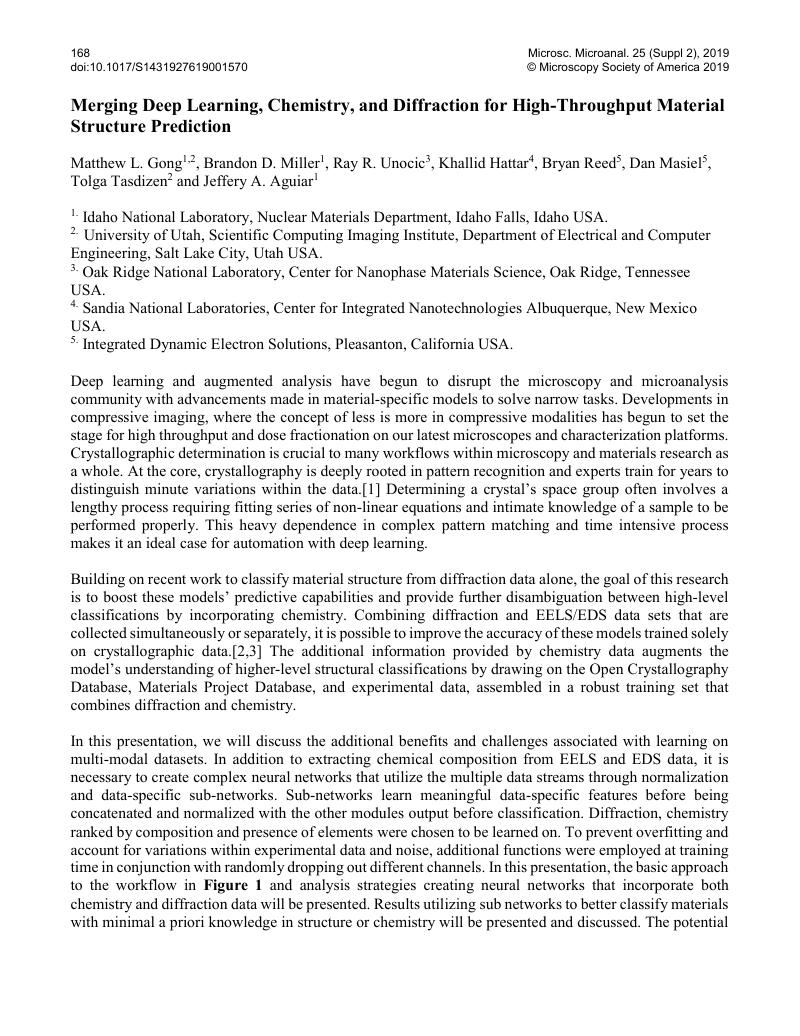No CrossRef data available.
Article contents
Merging Deep Learning, Chemistry, and Diffraction for High-Throughput Material Structure Prediction
Published online by Cambridge University Press: 05 August 2019
Abstract
An abstract is not available for this content so a preview has been provided. As you have access to this content, a full PDF is available via the ‘Save PDF’ action button.

- Type
- Data Acquisition Schemes, Machine Learning Algorithms, and Open Source Software Development for Electron Microscopy
- Information
- Copyright
- Copyright © Microscopy Society of America 2019
References
[3]Dongarra, J et al. , Int J High Perform Comput Appl. 25 (2011). doi:10.1177/1094342010391989.Google Scholar
[4]Work supported through the INL Laboratory Directed Research& Development (LDRD) Program under DOE Idaho Operations Office Contract DE-AC07-05ID14517. This work was performed, in part, at the Center for Integrated Nanotechnologies, an Office of Science User Facility operated for the U.S. Department of Energy (DOE) Office of Science. Sandia National Laboratories is a multi-mission laboratory managed and operated by National Technology and Engineering Solutions of Sandia, LLC., a wholly owned subsidiary of Honeywell International, Inc., for the U.S. DOE's National Nuclear Security Administration under contract DE-NA-0003525. The views expressed in the article do not necessarily represent the views of the U.S. DOE or the United States Government. In part, this research was conducted at the Center for Nanophase Materials Sciences, which is a DOE Office of Science User Facility.Google Scholar




